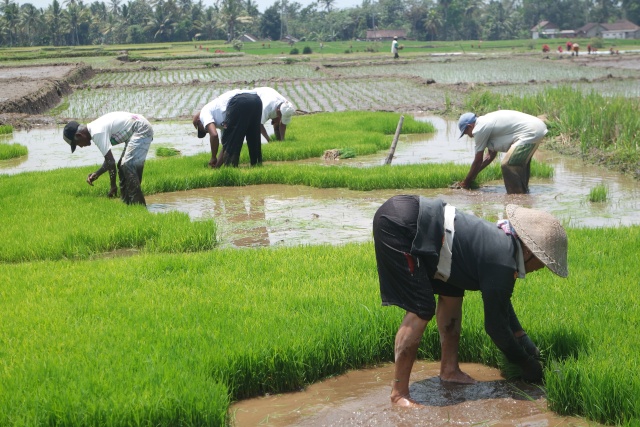ABC News 10/10/2017
The smell of durian has been described by some as "turpentine and onions, garnished with a gym sock" — and scientists have now unlocked the biology behind its infamous aroma.
Key points
• Durian is renowned for its pungent smell and strong taste
• It is a delicacy and important cash crop in Southeast Asia
• Genome study reveals extra copies of a key gene involved in sulphur production, which contributes to the smell
Many people in South-East Asia, including Professor Bin Tean Teh, love the tropical delicacy, which is known as the "king of fruit".
"It has a very rich, creamy taste. To us it's like a heavenly smell and it melts in your mouth," said Professor Teh, a cancer researcher at Duke-NUS Medical School in Singapore.
Professor Teh is the lead author of a study, published today in Nature Genetics, which has identified key genes that are responsible for the fruit's pungent smell and strong taste.
"Usually you either like it or hate it. There's very few people in between saying, 'Oh it's okay'," he said.
There are about 30 species of durian, some of which are edible and some not.
The most prized of these is Durio zibethinus — a green, spiky specimen the size of a two-kilogram watermelon.
It can fetch up to $36 a kilo, but until now, very little was known about its biology.
Professor Teh and colleagues sequenced the genome of Musang King, a particularly pungent variety of Durio zibethinus that is grown in Malaysia and is banned on many public transport systems in South-East Asia.
"Until this study, nobody had cracked the durian genome," said Professor Teh.
Specially evolved to attract animals
His team found around 46,000 genes in the durian's full DNA sequence — twice as many as the human genome — and discovered its heritage can be traced back 65 million years to the cacao plant, from which chocolate is made.
With the fruit's whole-genome sequence in hand, the researchers focused on a particular gene that regulates the production of sulphur compounds, which give off a rotten gas smell.
"We found that this gene is highly expressed only in the fruit — the pulp — but not in the leaves or the stem or the roots," said Professor Teh."This gave us the first clue that this is a key gene that results in the strong, pungent smell of durian."
When the researchers compared the durian genome to other related plants, such as cacao and cotton, they found four copies of this gene, known as MGL, instead of just one.
They also found that genes involved in regulating sulphur pathways were more active in the Musang King variety than Monthong, a milder version grown in Thailand.
Furthermore, these genes were only active when the fruit was ripe.
The researchers think this boost in activity was linked with the production of ethylene, a plant hormone involved in ripening.
"Our hypothesis is that the smell actually attracts animals to eat the durian and disperse the seed," said Professor Teh.
Important implications for agriculture and biodiversity
Professor Teh said the findings had important implications for the development of the fruit, which is a lucrative food crop worth millions of dollars in South-East Asia.
"Theoretically you could knock out this MGL gene. Then you would get a much lesser smell," he said."With the ripening factor as well, you can shorten the whole fruiting and ripening time."
The research could also be used to produce lower sugar varieties — thanks to another group of genes discovered by the team.
Professor Teh said the genome could also be used to "barcode" the product to ensure top-shelf varieties of the fruit — which is eaten fresh or used in delicacies such as durian moon cakes — are not substituted for lower quality fruit.
"Sometimes people ... take out fruit and mash them together."
He also hoped the work could contribute to maintaining biodiversity in the region.
"There are many species of durian, some of which are endangered species because they are not commercially attractive," he said.
"We're keen to extend our efforts and work with botany experts. This is our long-term goal."
siK.
.
